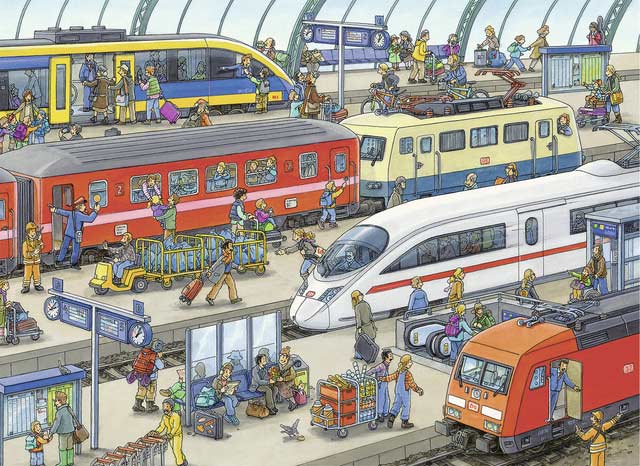Specific Item Information: These specially reinforced ARP (Air Raid Precautions) signal boxes featured substantial construction, primarily to protect the locking room gear from bomb blasts during air raids in World War II. A number of similar signal box designs were still to be found around the rail network until quite recently, due to them being difficult to demolish!
The 259 includes all moulded parts required which are produced to a high standard and in base colours. Kit requires painting and light weathering to create the signal box pictured above.
Road Name History:  Railroad structures include but are not limited to stations, depots, yard offices, interlocking towers and tanks. A train station, railway station, railroad station, or depot is a railway facility where trains regularly stop to load or unload passengers or freight.
Railroad structures include but are not limited to stations, depots, yard offices, interlocking towers and tanks. A train station, railway station, railroad station, or depot is a railway facility where trains regularly stop to load or unload passengers or freight.
It generally consists of at least one track-side platform and a station building (depot) providing such ancillary services as ticket sales and waiting rooms. If a station is on a single-track line, it often has a passing loop to facilitate traffic movements. The smallest stations are most often referred to as "stops" or, in some parts of the world, as "halts" (flag stops). Stations may be at ground level, underground, or elevated. Connections may be available to intersecting rail lines or other transport modes such as buses, trams or other rapid transit systems.
From Wikipedia

It generally consists of at least one track-side platform and a station building (depot) providing such ancillary services as ticket sales and waiting rooms. If a station is on a single-track line, it often has a passing loop to facilitate traffic movements. The smallest stations are most often referred to as "stops" or, in some parts of the world, as "halts" (flag stops). Stations may be at ground level, underground, or elevated. Connections may be available to intersecting rail lines or other transport modes such as buses, trams or other rapid transit systems.
From Wikipedia
Brand/Importer Information: Ratio Scale Models was started in 1950 by Jack and Dev Webster, producing fine coach kits made from sheet plywood pressings in Chorleywood, Hertfordshire. They commenced manufacturing plastic kits in 1959 and the name was changed to Ratio Plastic Models. The factory was moved to Goring-on-Thames in 1961, and to Sturminster Newton in 1972. As the range continued to grow, they moved to larger premises in Buckfastleigh in 1986. Ratio was sold to PECO in 1996; production now takes place at a new factory in Buckfastleigh, along with the Wills and Parkside ranges.
Item created by: CNW400 on 2023-12-05 16:39:59
If you see errors or missing data in this entry, please feel free to log in and edit it. Anyone with a Gmail account can log in instantly.
If you see errors or missing data in this entry, please feel free to log in and edit it. Anyone with a Gmail account can log in instantly.








